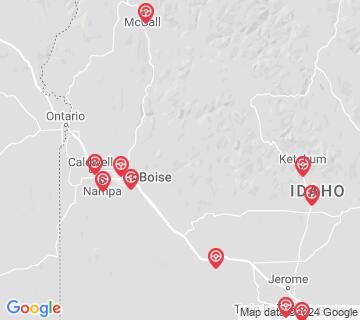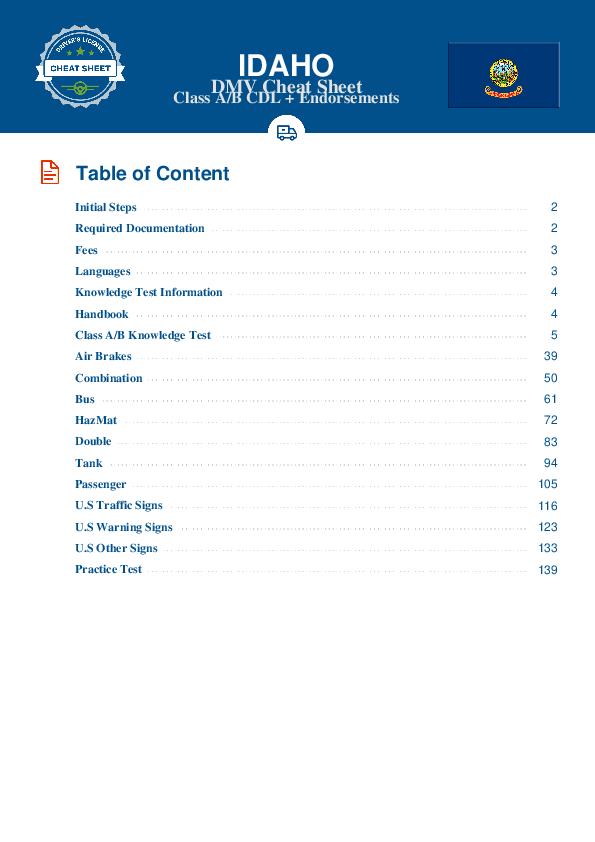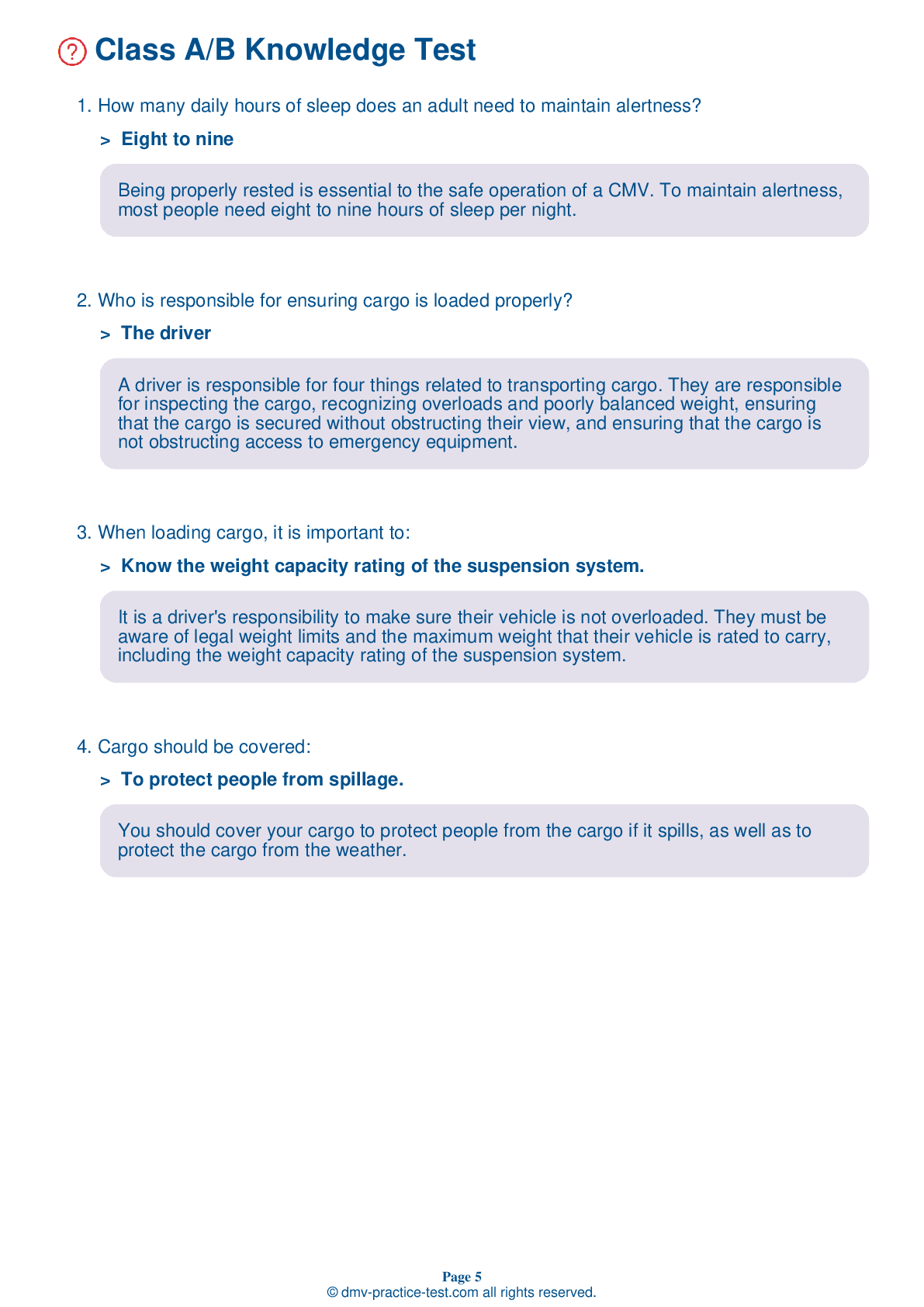HazMat #1
Hazmat Test | Idaho 2025 #1
On our website, we provide FREE practice - CDL hazmat test online! The official exam test consists of several obligatory parts, with all of them checking your knowledge of different blocks of road rules. If you need to obtain a ID CDL hazmat endorsement in 2025, practice as much as possible. Free sample tests published on our website will help you check and improve your knowledge and boost your grades. Please bear in mind that Idaho requirements for issuing a hazmat endorsement for CDL may vary from those established in other states.
30
24
20
1 . Load hazardous materials:
Always load hazardous materials away from heat sources. Be aware of regulations on explosive or flammable materials that prohibit them from being loaded in cargo spaces with heaters.
2 . The identification numbers assigned to chemicals can be found:
Information about hazardous chemicals is found in the Emergency Response Guide (ERG) provided by U.S. Department of Transportation (DOT). The ERG is indexed by the proper shipping names and identification numbers of substances.
3 . If a shipping paper describes both hazardous and non-hazardous materials:
If a shipping paper lists both hazardous and non-hazardous materials, the hazardous materials must be entered first.
4 . When completing a conventional parallel parking maneuver, you should:
You may be asked to complete a conventional parallel parking maneuver into a parking space that is to the right of your vehicle. You should drive past the parking space before backing into it while bringing the rear of your vehicle as close to the rear of the space as possible. Your vehicle should be completely within the boundaries of the space.
5 . When taking the basic vehicle control skills test, failing to exit your vehicle properly during any exercise will result in:
When exiting your vehicle during the basic vehicle control skills test, you must face the vehicle and maintain three points of contact at all times. If your testing vehicle is a bus, you must maintain contact with the handrail. Exiting the vehicle incorrectly may result in automatic failure of the basic control skills test.
6 . Hazardous materials shipping papers may not be kept:
Shipping papers must be quickly accessible in the event of an emergency. While driving, operators must keep the papers in a pouch on the driver’s door or in clear view and within immediate reach while their seat belt is fastened. Shipping papers may be kept on the driver’s seat when the driver is out of the vehicle.
Search the best driving school in your neighbourhood
2025 Idaho | Frequently Asked Questions
To acquire a CDL Hazmat endorsement in Idaho, you must first possess a valid Idaho Commercial Driver's License (CDL). After that, you will need to pass the Hazardous Materials Endorsement Knowledge Test. Lastly, you should complete a federal security threat assessment application, provide fingerprints, and pass an FBI background check. The endorsement will be added to your CDL once approved.
To obtain a CDL Hazmat license, you must first have a valid Commercial Driver's License (CDL). You must be at least 21 years old and be able to read and speak English. You also need to pass a physical examination every two years. Lastly, you must pass the Hazardous Materials Endorsement Knowledge Test and an FBI background check.
When applying for a CDL Hazmat endorsement, you need to provide proof of U.S. citizenship or legal status, such as a birth certificate or passport. You also need your current Commercial Driver's License (CDL), proof of Idaho residency, and your Social Security Number. Finally, you'll need to complete a federal security threat assessment application and provide fingerprints for an FBI background check.
Yes, there is a dedicated written test for the CDL Hazmat endorsement in Idaho. This test assesses your knowledge on transporting hazardous materials safely. It covers topics such as loading and unloading, bulk packaging marking, driving and parking rules, and emergency response procedures. The Idaho Commercial Driver’s License Manual is a great resource to prepare for this test.
The written test for the CDL Hazmat endorsement covers a wide range of topics related to hazardous materials. These include identifying different types of hazardous materials, understanding shipping papers, placarding rules, loading and unloading procedures, handling emergencies and incidents, and understanding the associated risks and safety precautions when transporting hazardous materials.
Yes, obtaining a CDL Hazmat endorsement in Idaho involves extra charges. You'll need to pay a fee for the knowledge test, and there's also a fee for the endorsement itself. Additionally, the TSA background check carries a separate fee. The exact costs can vary, so it's recommended to check the current fees with your local DMV office or on their website.
Yes, to obtain a Hazmat endorsement in Idaho, the Transportation Security Administration (TSA) requires a federal background check and fingerprinting. This is to ensure the driver doesn't pose a security threat. The applicant must be a U.S. citizen or have legal status, and must not have committed certain crimes.
Yes, specialized training is required for a CDL Hazmat endorsement. Applicants must pass a written test on federal and state regulations for transporting hazardous materials. While it's not mandatory, many opt for professional training programs to prepare. After passing the test, a TSA background check is also required before the endorsement is granted.
No, you cannot legally transport hazardous materials without a valid CDL Hazmat endorsement in Idaho. The endorsement ensures that drivers are trained and equipped to handle hazardous materials safely. Violating this requirement can lead to severe penalties, including fines and suspension or revocation of your commercial driver's license.
Yes, you can add the CDL Hazmat endorsement to your current CDL license. It doesn't require a new application for a CDL, but it does require passing a written test specific to Hazmat transportation, as well as a TSA background check. Once these are successfully completed, the Hazmat endorsement can be added to your existing CDL.




